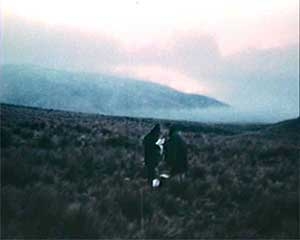Participants
Phil Dadson (instigator, New Zealand); Lisa Jones (New Zealand); IB Heller (New Zealand); Leon Narbey (New Zealand); Esther Heller (New Zealand); Geoff Steven (New Zealand); Anita Narbey (New Zealand); Vanessa Narbey (New Zealand); Jim Allen (New Zealand); Ben Allen (New Zealand); Karen Svenson (New Zealand); Alice Hill (Inuvik N.W. Territory, Canada) ; Bert Flugelman (Bourke, Australia); Noel Hutchinson (Bourke, Australia); Jim McDonald (Bourke, Australia); Mitch Johnson (Bourke, Australia); Lief Kronborg (Uppsala, Sweden); Michael Parsons (Greenwich, UK); Andrew Stephenson (Greenwich, UK); Ken Friedman (San Diego, USA) ; Jim Baltaxe (Rarotonga); Ron Nimmo (Antarctica) ; Brian Potter (Antarctica)
Duration
1800hrs GMT, 10 minutes
Time Frame
23/24 September, 1971, depending on longitude of location at 1800hrs GMT
Key Locations
Lake Taupo, New Zealand (desert road, volcanic plateau) (lat: 39 37′ S, Long: 175 44′ E, Alt: 3525′) 6am 24 sept
Inuvik, N.W. Territory, Canada (northern latitude, sub antarctic tundra) 25 sept 11am pacific standard time.
Bourke, NSW, Australia (lat:30.05 S, long: 145 90′ E, Alt: 361′) 4am 24 Sept
Uppsala, Sweden (lat: 59.51 N, long: 37.37 W, Alt: 79′)
Greenwich, UK (lat: 51.29′ N, Long: 0 Alt: 154.7′) 6pm GMT 23 Sept.
San Diego, USA West Coast (lat: 32 45′ N, Long: 117 07 W, Alt: 280′) 10am 23 Sept
Rarotonga, Cook Islands (lat: 21 15′ S, Long: 159 46′ W, Alt: sea level) 7.30am Sept 23
Ross Island, Antarctica (lat: 77 80′ S, Long: 166 80′ E, Alt: approx. 650′) 0600am 24 Sept.
Technologies
Audio Tape, film, still photographs
Each participant was required to make a report onto tape of data and impressions relevant to their position on earth, and instance in time, and take a dozen or so exposures of the location in which they performed. Both at an instant in time synchronised with other participant locations and coincident with the autumnal and spring equinoxes in northern and southern hemispheres.
The event was structured as a composition in a number of stages. 1. the distribution of parts to largely unknown participants. 2. the performance. 3. the return of the recorded materials (the first evidence of anyone’s participation) and 4. the compilation of the recordings into a film.
Over the 10 minutes were a sequence of activities: a. and official weather report for the location. b. observations of the immediate conditions of earth and air. c. sounds of the environment. d. tide, moon, sun and earth phases of the instant. e. time; asserted at regular intervals. f. description of environmental features of location.
The New Zealand part began at 6am sunrise on the volcanic plateau south of Lake Taupo, filmed continuously on 16mm Ektachrome, the camera describing a circle around the group of participants and recording the transition of earth turning into light. The sound track is a straight mix of the tape recordings.
Eight of the intended fifteen participants responded.
This description is summarised from:
Jim Allen and Wystan Curnow, “New Art: Some Recent New Zealand Sculpture and Post-Object Art”, Auckland: Heinemann Educational Books, 1971.

